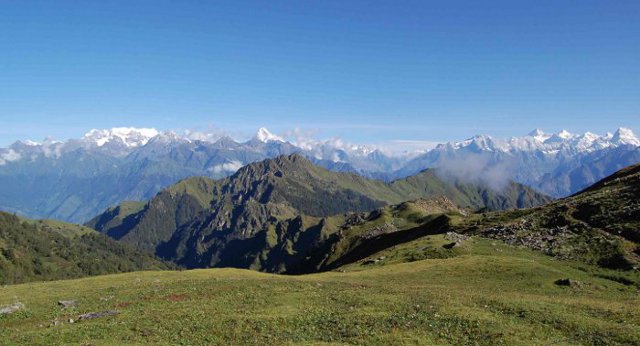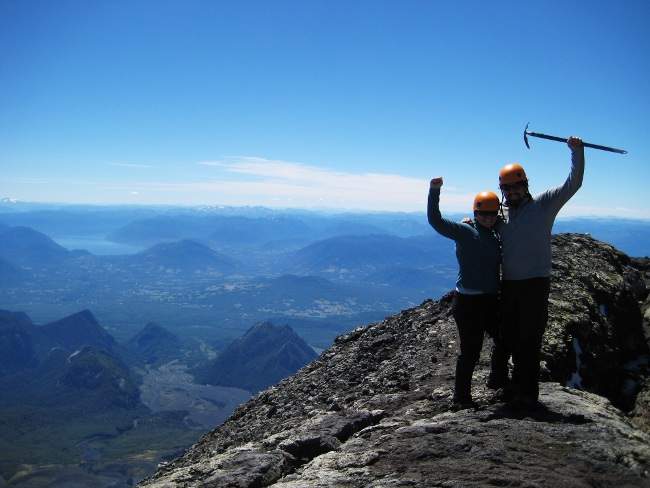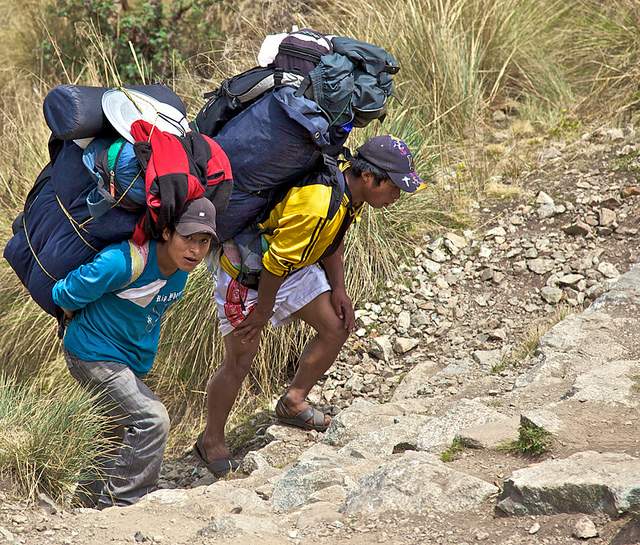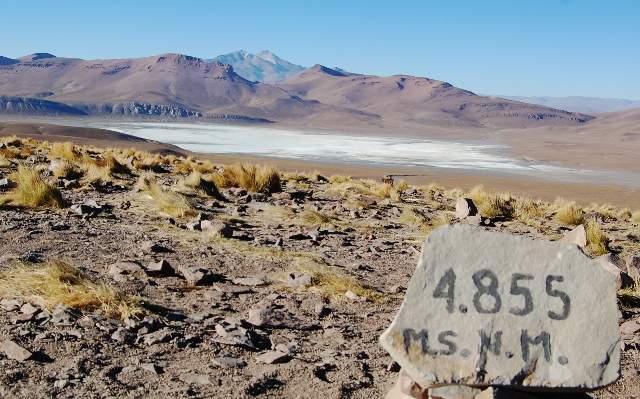We all know there’s plenty of information out there for the hardcore hiker. You know, the one who lives in Colorado and goes hiking in the Rockies every weekend. The one who only eats lean meat and fish, whole grains, and vegetables. The one whose idea of a splurge is drinking one light beer and eating one piece of cheese. If you are one of these people, this guide is not for you.
Do you love the outdoors and hiking but are a few hundred miles or more away from anything resembling a mountain? Have you dreamed of summiting a Himalayan peak, hiking to the top of a volcano, or taking a multi-day trek in Patagonia? Are you afraid that because of your inexperience, geographic location, or love of bacon wrapped appetizers and giant glasses of beer you will never be able to do any of the above things? Well this guide is here to help you realize that you can accomplish any of your hiking and trekking goals. The only thing you need to do is be prepared (and temporarily limit your booze intake and late night Taco Bell runs, and I stress temporarily).
[social]
If you’re an everyday Joe like myself, who likes the outdoors but lives in a city (St. Louis, Missouri) that doesn’t exactly lend itself to serious hiking and trekking, and if you are not a total health nut who likes the occasional trip to the old buffet table, then you may have several questions about how you can go about getting yourself prepared for a serious trek.
My hiking/trekking accomplishments
While I’m not the most experienced of hikers having grown up in the midwest, I do love getting out in the mountains when possible. It’s true that I spent most of my twenties eating pizza and chicken wings while throwing down calorie-laden beers. It’s also true that before I was 22, my hiking consisted of walking up a few hills in Missouri. But in the last ten plus years I have managed to accomplish some pretty cool hiking feats, especially considering my lifestyle and upbringing.
I say this not to brag, only to show that if someone like me can accomplish the above hiking feats, then anyone can.
Among others, I have summited a 16,400 foot (5000 meters) mountain in the Himalayas, I have hiked to the bottom of the Grand Canyon, I have gone on a four day trek in the Andes Mountains to Machu Picchu, I have hiked to the top of a volcano in Chile, and I have spent a few weeks hiking in Patagonia. I say this not to brag, only to show that if someone like me can accomplish the above hiking feats, then anyone can.
>>Read 10 Best Hiking Trails in the World.
>> Check out Hiking the Inca Trail to Machu Picchu: An Experience Like No Other
>> Read 10 of the Best Places to Hike in the United States
Why I am the man to write this guide
Based on my above accomplishments, you may be thinking that I am Mr. Fit and Trim. This is untrue. While I’m not a complete slob, I do love various horrible-for-you treats like beer, pizza, bacon, candy, brownies, and battered and fried things dipped in ranch dressing. I also tend to enjoy a nice Sunday on the couch doing absolutely nothing but consuming the above things while watching an entire season of Lost and nursing a hangover. Unfortunately, these are not once a year things. Mr. Fit and Trim I am certainly not.
When preparing for a hike, I do get serious about my preparation, mainly because I cannot just rely on my natural athleticism and good fitness, because, well, I’m not naturally athletic and I like beer and cheese too much to always be fit.
But as I have mentioned, I do love hiking and challenging myself, and when preparing for a hike, I do get serious about my preparation, mainly because I cannot just rely on my natural athleticism and good fitness, because, well, I’m not naturally athletic and I like beer and cheese too much to always be fit.
So I have written this guide for you, the not so fit guy or gal who likes to shovel chips and cheese dip into your mouth while sucking down 500 calorie margaritas, but who also loves the mountains, the outdoors, and dreams of one day standing atop a steaming volcano in the middle of Chile after successfully hiking up it.
>> Check out these Long Treks on Short Breaks: 10 Small Countries You Can Walk Across
>> Read Hiking in North Wales: Sampling Steep Climbs, Legends, and Holy Undertakings
>> Read about these 10 Awesome Treks that (Almost) Anyone Can Do
Questions you should ask
There are many questions you need to ask before setting off on your first real trek. Our first major hike was to the bottom of the Grand Canyon in Arizona back in 2002. We went solo, with no group or guide, which with plenty of homework was relatively easy and certainly manageable here in the United States.
There are also many hikes that are organized with a group and a guide. If you travel in developing countries and plan on trekking, then chances are you will have to join a group. Group travel and tour guides are not typically our cup of tea, but they are a necessity when traveling in some regions, and we have been lucky enough to have had some great experiences with these, mainly due to our research and the questions we asked.
Questions to ask when trekking with a group
What does the tour group provide as far as food and drink?
Are meals, snacks, water, and/or any other beverages included in the price? Being that you are still reading this, you obviously like to eat. That’s okay. I do, too, and knowing and accepting that I eat more than our 110 pound Peruvian guide is probably good, too. That means even if the group does provide meals, I should probably bring some extra snacks along as well because I will most likely be hungry before “Mr. I order a salad, hold the cheese and put the dressing on the side” for dinner. Also, it’s probably wise to bring some extra water with you, too, particularly if you are in a developing country. Don’t go overboard, though, water is heavy. But dehydration sucks, so don’t get dehydrated and make sure all water you consume, no matter what country you are in, is safe.
What else does the tour group provide?
Many groups provide things like tents and sleeping bags. Many do not. Verify what it is you’re paying for. What is the quality of the tent you’ll be sleeping in? What kind of weather can they withstand? How big and heavy are the sleeping bags (and everything they give you – you must know how much weight you’re carrying). What is the minimum temperature they can withstand? What about a sleeping mat? Do they have those? Do you have to carry all this stuff that they offer or do they have porters for hire? Does this cost more or is it included? Do they offer trekking poles (don’t laugh, trekking poles are a Godsend, and don’t try to act all macho, remember that you just ate a double bacon cheeseburger)?
Are there porters?
Many groups have porters to carry stuff. How much do they carry? How much are you required to carry? Can they carry more of your stuff if you’re willing to pay extra? How are the porters treated? Do they get to sleep in tents? How are they fed? Is there a weight limit of how much they can carry? Some companies horribly mistreat their porters, so do your homework and go with a reputable company who treats their employees right. Ask all the above questions before committing, and if your company is considerably cheaper than others, then you may want to raise an eyebrow and find out why.
Do you have to hike together as a group or can you go at your own pace?
In my experience, especially with multi-day treks, you go at your own pace. It just makes sense as everyone is of a different fitness level and thus hikes differently. Since you aren’t the fittest person in the world and that custard donut you rationalized for breakfast because you were about to go on a trek is still swishing around in your stomach, make sure you ask about the companies’ procedures for hiking in a group. It sucks to fall behind the rest of the group and have them all waiting on you, especially when they saw you eating that donut earlier in the day. They will judge. So ask if you have to hike as a group. It’s really that simple.
Check out the BootsnAll’s Adventure Tours, like
Questions to ask when going on your own
How much food and water do I need to bring with me?
This is a pretty hard thing to estimate. You obviously don’t want to bring too little because you’d starve. You love to eat, and that’s why you’re reading this guide. But despite your love of fourthmeal, remember that you’re carrying everything on your back, so don’t go overboard. The goal is to come back with as close to nothing as possible. The best thing to do is figure out how many meals you will be eating during your trek and simply lay them all out on a bed or table. Don’t forget to bring a few snacks as well. Snacks are good, and you like food, remember.
What kind of food should I bring?
Being that we are who we are, i.e., people who love to eat, we’re probably not used to living on a diet of rehydrated meals, ramen noodles, bread, and trail mix, but that’s exactly the kind of stuff you’re going to have to eat for a few days while trekking. Don’t worry though, you will be burning tons of calories, so it’s advised to bring along chocolate and candy to give yourself a quick sugar boost. Unfortunately for meals it’s just not feasible to bring a pizza oven, dough, cheese, and pepperoni in your pack. Those things are heavy. So you’re going to have to wait until you get back for that. But when you do, you will have earned it, so feel free to get extra cheese on that pizza. And be sure to drink a few extra cold ones, too.
What is the weather going to be like?
This is a huge one. You really have to do your homework and be prepared when it comes to weather. The mountains are a fickle bitch, and the weather can and will change on the drop of a dime. Know that and come prepared with rain and cold weather gear. On the flip side of that, if you are hiking in the desert, know what you need there. Light colored and light weight clothing that wick moisture, plenty of water and salty foods (there is such a thing as water intoxication), sunscreen, and a hat are all necessities when hiking in the desert. Do your homework and get the right gear. Unfortunately this is not something you can skimp by on, so buck up and get some decent gear. It doesn’t have to be top of the line, but don’t go to Walmart.
So what exactly do I need as far as gear?
Each trek is different, and weather and climate always play a part in what kind of clothes you need. One thing that won’t change; however, is footwear. First, buy good socks. Get some something made out of merino wool. They will be your best friends. I still have and wear a pair of Smartwool socks that I bought for that Grand Canyon trek back in 2002. What about shoes and/or boots? I don’t particularly like boots. In fact, I don’t really like shoes. If I could wear flip flops or no shoes at all for the rest of my life, I’d be totally happy with that. But I did not grow up in a Nepalese village in the Himalayas, so sandals don’t really work for me as footwear while hiking. Luckily for me, my ankles are freakishly strong. I don’t know why, and I know I’m dooming myself to a sprained or broken ankle by writing this, but so be it. I don’t wear boots. I have a nice pair of hiking shoes that have worked fine for me while hiking in New Zealand, the Andes, and the Himalayas, so that’s what I’m sticking with. I’m not telling you not to wear boots. I’m just saying what works for me. Do the same for yourself. Get what works best for you, and for God sakes, break them in before you go. Whatever you buy, make sure that they’re waterproof. You will get rained on, and wet feet cause blisters, and blisters cause you to hate hiking.
Is altitude a factor?
Many times when going on a trek, altitude is a factor. If you don’t literally live in the mountains, you are going to have to acclimate. Don’t take this lightly. Remember that you are reading this guide because you aren’t terribly fit and your idea of a condiment is cheese dip. So don’t try to go all tough-guy out there and think you can dive right into a 4000 foot ascent on day one. If you’re going to be hiking in some serious altitude, plan a few days at a higher elevation in order to acclimate. And even though you are resting and preparing during these few days, don’t think of this as party time. You need to hydrate yourself. Again, wait until you’re finished, then you can rationalize those 13 beers and extra large order of gravy fries. And yes, feel free to use your favorite condiment on those fries.
>> Read 8 Tips for Responsible Trekking
>>Read about the The Best Hiking Backpacks
>> Find out what goes into Choosing the Right Hiking Boots
>> Check out our recommendations for Best Trekking Poles For Hiking and Backpacking
Hiring help
There is certainly more to learn about your first serious trek than these 2000+ words have given you, but this should be a pretty good start. Consulting various websites and books is always a good idea when embarking on something new that you are unfamiliar with, so I advise you not to use this as your only source of information.
However, if my style and wit have ruined all other hiking guides for you, that’s understandable, so feel free to contact me to be your personal guide throughout both the planning and the trek itself. I have been a coach in the past, so I know how to motivate, and I offer fair rates. So if you’re interested, I will be more than willing to meet you for pizza and beer to discuss. Rates are always negotiable, but the pizza and beer are not. And I get to choose the toppings.
Photo credits: 1, 5, all other pictures belong to the author and may not be used without permission.







